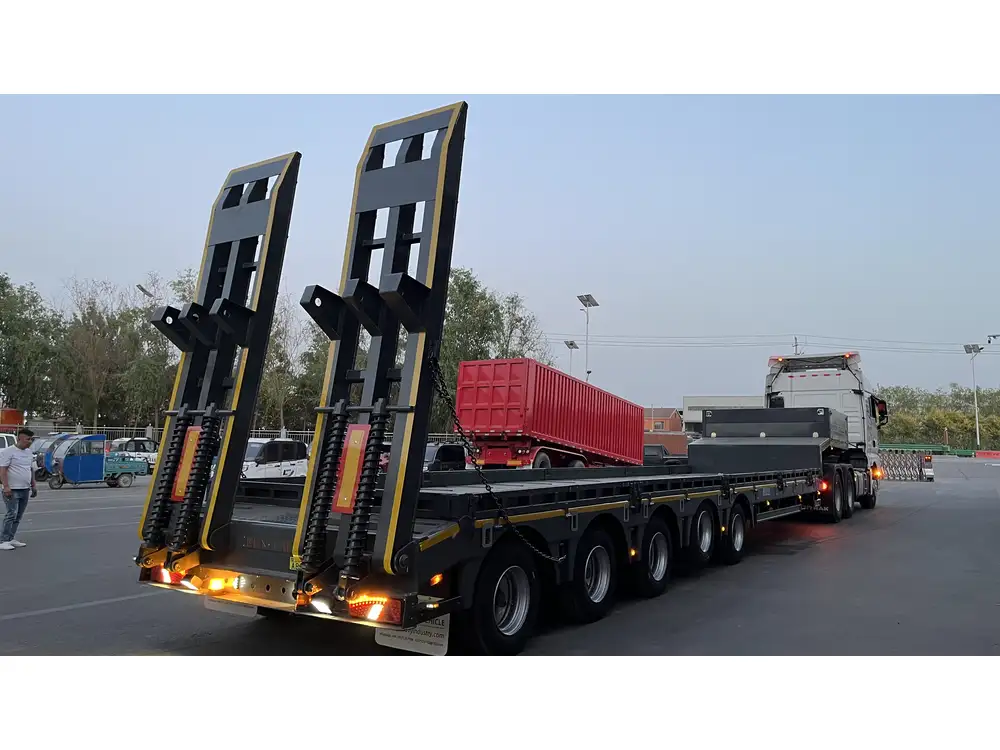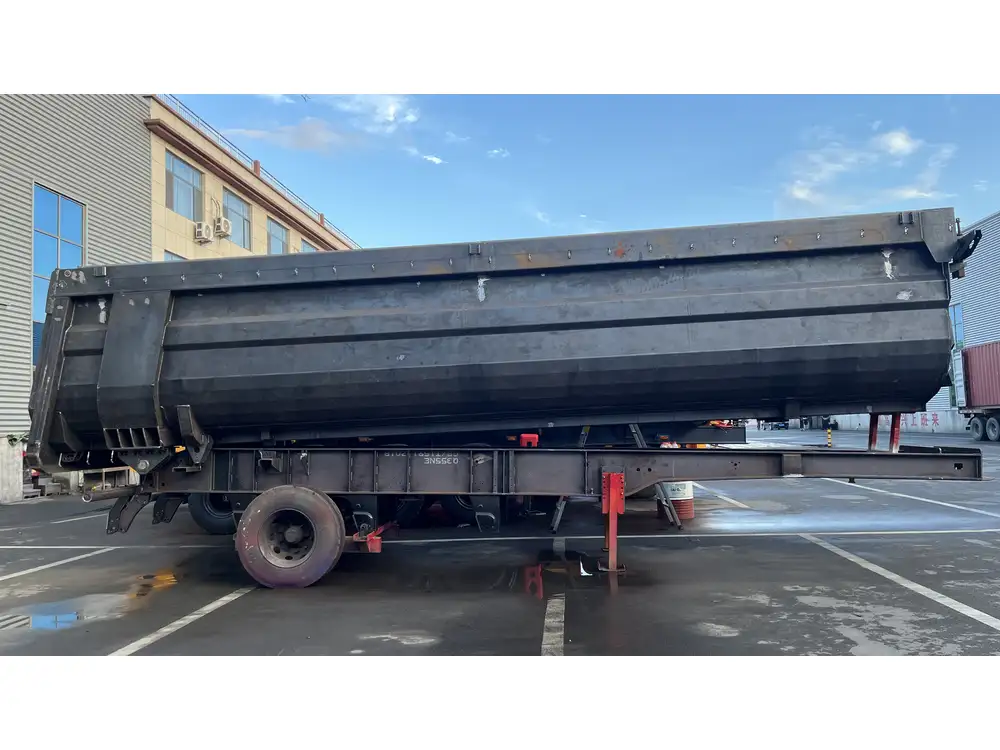As a manufacturer of semi-trailers, it is imperative to delve into the intricate dynamics of vehicle aerodynamics and the factors that influence trailer performance on the road. One fascinating phenomenon that often arises in discussions around heavy-duty trucking is the concept of suction created under semi-trailers during travel. This article aims to provide an in-depth exploration of this subject, addressing core queries while offering insights about its implications for efficiency, safety, and cargo protection.
What Causes Suction Under Semi-Trailers?
Aerodynamic Forces at Play
Suction, as it relates to semi-trailers, primarily involves the interaction of air with the vehicle and its surroundings. Semi-trailers, while being towed, experience various aerodynamic forces that can lead to significant air pressure differentials beneath the trailer. Understanding these forces requires familiarity with several key aerodynamic principles:
Bernoulli’s Principle: This principle states that as the velocity of airflow increases, the pressure decreases. Thus, when air moves rapidly over and around the trailer, it produces lower pressure beneath it, creating a suction effect.
Boundary Layer Effects: As air flows over the surface of the semi-trailer, it creates a boundary layer that can contribute to suction beneath the vehicle. The interaction between the air moving along the trailer sides and beneath the trailer base is critical in forming these dynamics.
Wake and Turbulence: The wake generated behind the trailer also impacts pressure levels. Once the air passes the turning points of the trailer, it begins to rejoin, creating turbulence and low-pressure zones that contribute to suction beneath the unit.

Implications of Suction on Performance
An in-depth understanding of the suction effect not only highlights the physics involved but also unveils significant implications for the performance and handling of semi-trailers. Below are the primary areas affected by this phenomenon:
| Aspect | Positive Effects | Negative Effects |
|---|---|---|
| Fuel Efficiency | Enhanced fuel economy due to reduced drag. | Excessive suction can destabilize the trailer. |
| Stability | Can improve road stability with balanced airflow. | May cause swaying or rough handling at high speeds. |
| Cargo Protection | Secured cargo due to less movement. | Increased risk of load shift in severe conditions. |
| Safety | Lower energy consumption aids in safety. | Unanticipated loss of control from suction effects. |
How Suction Impacts Fuel Efficiency
Aerodynamic Efficiency
Fuel consumption is a pressing concern for fleet operators, and reducing fuel consumption directly correlates to operational costs. Here are key insights on how the suction effect can enhance aerodynamic efficiency:
- Reduced Drag: As the trailer moves, reduced air pressure underneath minimizes frontal drag forces, leading to lower fuel consumption rates.
- Streamlined Design: Manufacturers focusing on aerodynamic shapes can strengthen the suction effect, translating to improved fuel economy over longer hauls.
- Technological Enhancements: Implementing side skirts, tail fairings, and aerodynamic add-ons can enhance airflow, capitalizing on the suction effect for additional benefits.

Practical Examples
For example, a fleet that switches to aerodynamic trailers has reported fuel savings up to 10% over traditional designs. Such figures are particularly attractive in today’s eco-conscious market, emphasizing sustainability and cost management.
Suction and Stability: A Double-Edged Sword
The Stability Equation
While suction can enhance stability by helping to keep the trailer grounded, it also poses inherent risks. The intricacy of vehicle dynamics necessitates that manufacturers balance these factors accordingly:
- Positive Stability: When optimally harnessed, suction helps lower the center of gravity, thus improving the handling of the trailer, especially in crosswinds.
- Destabilization Risk: In certain conditions, the suction effect may become excessive, causing the trailer to become airborne intermittently or initiate sway, particularly at high speeds or during abrupt maneuvers.

Engineering Solutions
To mitigate such risks, manufacturers are increasingly focused on engineering solutions that optimize stability. Enhanced suspension systems, weight distribution measures, and computational fluid dynamics modeling are now commonplace in trailer design.
The Influence of Load on Suction Effects
Load Dynamics
The load carried by a semi-trailer has a considerable impact on how suction is generated and managed:
Weight Distribution: Proper weight distribution across the axles ensures stability and enhances the positive impacts of suction. An imbalanced load can exacerbate negative effects.
Load Shape: The shape of the cargo also influences the airflow around the trailer—lower-profile loads can help maintain consistent airflow, reducing turbulence and suction variances.

Tips for Load Management
- Regular Inspection: Regularly inspect load positions to ensure optimal placement and minimize the potential for uneven distributions.
- Use of Straps and Braces: Properly securing loads with industrial straps and braces can ensure that even with changing airflow patterns, cargo remains stable.
Safety Implications of Suction Under Semi-Trailers
Identifying Risks
Understanding suction at work beneath a semi-trailer translates into a comprehensive safety strategy:
- Unexpected Maneuvers: Sudden steering adjustments can cause the lost suction effect, leading to swerving or loss of control.
- High-Speed Travel: When traveling at high speeds, drivers may underestimate the impact of suction on trailer dynamics, increasing accident risks.

Best Practices for Drivers
Fleet operators and drivers can adopt several best practices to enhance safety in light of suction dynamics:
- Awareness Training: Implement training sessions that address the effects of aerodynamic forces and how they impact driving behavior.
- Speed Management: Encourage drivers to maintain moderate speeds to ensure better control and reduce the chances of destabilization.
Technological Advances in Trailer Design
Innovations to Enhance Efficiency and Safety
The industry has witnessed an evolution in semi-trailer technology designed to leverage suction for better performance:
- Smart Trailer Technologies: Introducing intelligent monitoring systems that measure suction levels and adjust settings in real-time could enhance stability.
- Aerodynamic Modifications: Employing automated systems that adjust aerodynamic elements, based on speed, can optimize airflow and minimize negative suction impacts.

Future Trends and Their Impact
- Sustainable Materials: The shift towards lightweight, sustainable materials reduces the overall load, enhancing aerodynamics.
- Advanced Computational Modeling: As computational methods become more sophisticated, manufacturers can use simulations to predict and optimize the suction effect during the design phase.
Conclusion: Embracing the Suction Dynamic
The phenomenon of suction under semi-trailers is a complex yet pivotal area of study for manufacturers and operators alike. By understanding and harnessing this effect, companies can improve fuel efficiency, enhance stability, and promote safer hauling practices. Future developments in trailer design and technology will likely continue to influence the ways in which suction can be effectively managed, leading to innovative solutions that address both operational efficiency and safety concerns.
With the ongoing evolution in the industry and a focus on sustainable practices, remaining informed and adapting to these aerodynamic dynamics will be crucial for manufacturers seeking to thrive in a competitive market. As we look ahead, leveraging the suction effect will be instrumental in shaping the capability and efficiency of semi-trailer operations.



